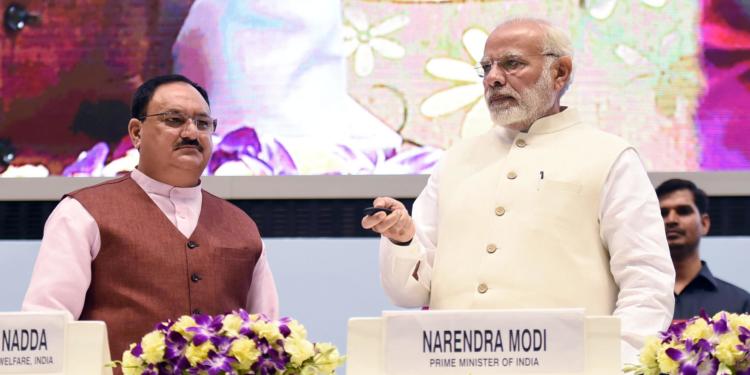Walking through the corridor of a hospital is one of the most oxymoronic feelings in the world. On one hand, people are celebrating happiness, a new birth, kicking off cancer successfully, getting high blood pressure under control and what not. On the other hand, people dying, suffering from diseases and problems, they just make you wish for a place where none of this existed. As much as we, as humans would like to not have the presence of life-threatening diseases in our world, we all know that this fantasy is impossible. What is possible though, is decreasing the threat of diseases, making the process of getting treatment easy, making healthcare affordable, medicines easily available and providing people with enough help so as to encourage them to get timely treatments.
The condition of the health sector of a country says a lot about the real face of that country. If the citizens are not well-taken care of, then the development takes a direct hit. Only when the citizens are healthy, can they be expected to work for their country and make it a force to be reckoned with. For many years, not a lot was done in this arena as initiatives in healthcare didn’t get the right kind of support as they should have. After the 2014 elections though, the new government realised this mistake and decided to change the existing norms.
The Modi government introduced many schemes for all stratas of the citizenry which ensured equal opportunity in healthcare to all. Not just this, initiatives like International Yoga Day were introduced to encourage self-care and healthy life-styles, in which the Prime Minister himself set an example for the entire nation to follow.
While changing the healthcare landscape and introducing schemes, it was kept in mind that all groups were included while formulating them and that there was something for everyone to take benefits from.
Starting from something as simple as the Ujjwala Scheme, which aims to provide LPG to lower-income households in order to avoid the threat of asthma that is caused by burning coal or wood to make food. The women of these households can now cook without having to worry about getting asthma or spending too much money on LPG cylinders as they are provided at low costs by the government through this scheme.
Another significant step taken in the direction of making healthcare affordable and easily available is the installation of AMRIT outlets where patients can get affordable medicines and reliable implants for treatments. Similarly, a scheme called the Jan Aushadhi Yojana was launched in 2015 under which numerous Jan Aushadhi Kendras have been opened where generic medicines are available at 50-80% less prices and patients just have to show the doctor’s prescription in order to get the medicine they want. The easy accessibility of medicines and implants has made it a little more convenient to take care of the patients’ health.
Vaccinations have been given equal importance with the introduction of Mission Indradhanush. The Prime Minister believes that no child should die of vaccine-preventable disease and in order to put into action what he believes in, he has introduced the Mission Indradhanush, and as of this 1st of February 3,38,00,000 children have been vaccinated under the age of 5 years. Not just children, the number of pregnant women immunized has also been increased, thus not only bringing down infant mortality rate but also making sure that every child born, is born in a world where the risk of death from a vaccine-preventable disease is not there. There has been a decrease of 37 points per lakh births. Where there were 167 deaths per lakh, now there are 130. With more medical facilities and help being given to pregnant women and their newborns, it’s being made sure that these babies and their mothers get a healthy and safe life. The mortality rates of not only babies but pregnant women are also being brought down with these measures. And a mother can take care of her children better when she herself is safe and healthy.
The biggest step taken by the Modi government, in regards to changing the face of healthcare in India, has to be the Ayushmaan Bharat Scheme, which aims to make healthcare free for 10 crore poor and vulnerable families. Rs. 1200 crore have been allocated to 1.5 lakh health and wellness centers. This scheme basically has two flagship programmes-
- Health and wellness centers- Under this 1.5 lakh centers will bring healthcare system closer to the homes of the people by providing comprehensive healthcare including non-communicable diseases and maternal and child health services. They will also provide free essential drugs and diagnostic services.
- National Health Protection Scheme- This programme will cover over 10 crore poor and vulnerable families by providing them coverage of upto 5 lakh rupees per family per year for secondary and tertiary care hospitalization. This is touted to be the world’s largest government funded healthcare plan.
National Health Protection Mission will be rolled out across all States/UTs in all districts with an objective to cover all the targeted beneficiaries.
For the senior citizens of India who are 60 years and above belonging to below poverty line (and 11 other defined designated categories such as MGNREGA Workers, Construction Workers, Mine Workers, Licensed Railway Porters, Street Vendors, Beedi Workers, Rickshaw Pullers, Rag Pickers and Auto/ Taxi drivers) a Senior Citizen Health Insurance Scheme (SCHIS) has been rolled out to help with health coverage is uptoRs. 30,000/–per annum per senior citizen for treatment packages, over and above RSBY entitlement. At present SCHIS is being implemented in 8 States namely Assam, Gujarat, Karnataka, Kerala, Meghalaya, Nagaland, Tripura and Uttar Pradesh.
Along with these schemes, another prominent step is in making the healthcare sector go digital following Digital India. For that, apps like NHP Swasth Bharat and Mera Aspataal have been launched.
The “Swasth Bharat Mobile Application” targets to empower the citizens to find reliable and relevant information regarding healthy lifestyle, disease conditions (A-Z), symptoms, treatment options, first aid and public health alerts.
The “Mera Aspataal Application” has been called as a paradigm shift by our Prime Minister himself. This app is an initiative to capture patient feedback on the services received from both public and empanelled private health facilities. The data received from the patients will be analyzed and used to improve quality of services provided by the healthcare facilities.
We should also not forget how India didn’t crumble under the hard times, when Ebola and Zika virus epidemics had struck, which almost brought down the GDP of countries like Liberia, Guinea, Sierra Leone etc. Our healthcare professionals, services and volunteers didn’t leave any stone unturned in working to avoid the violent spread of these epidemics.
These strides taken in the direction of providing universal healthcare and better facilities to each and every citizen of the country exhibit how India is growing in this sector and changing the bullpen for the people of the country while the world watches as India brings in a revolution in its healthcare system.


































